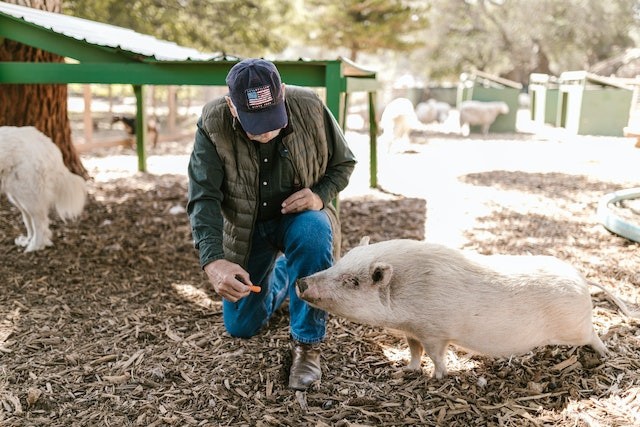
A human-pig hybrid is already in progress despite the debate over the issue. According to a report, scientists develop chimeras for a reason.
Purpose of Human-Pig Hybrid
Creating a chimera is the same as cloning. However, the vast difference is the source of the transplanted nucleus. In humans, a chimera is a person with two cells from different sources, per WebMD.
In the human-pig hybrid, the egg is from a pig, and the nucleus comes from a human, per How Stuff Works. It could appear that this procedure would result in an embryo that is 50/50 pig and human.
In actuality, the embryo is almost all human; according to estimates, pig DNA makes up only 0.1% of the genetic makeup of the finished animal, Telegraph reported. This is so because the mitochondrial DNA, which contains the genetic instructions still present in the egg, only has 37 bases. The mitochondria are the source of energy for the cell. Comparatively, the nucleus houses 29,000 genetic instructions. The resulting embryo is virtually totally human because the nucleus is human.
If you wonder why experts don't just use human embryos, it's because it's expensive, morally dubious, and illegal in some places. Additionally, neither these embryos' stem cells nor their embryos will ever be implanted as they are only intended for research.
The main objective of the pig-human hybrid study is to investigate the mechanisms of human sickness to discover treatments. The aim is to implant an egg's nucleus in a person with illness-specifically familial heart disease.
Scientists want to understand more about the underlying workings of heart disease to assist improved therapies and perhaps even cures by seeing how the DNA from a person with a fatal genetic ailment instructs cellular development in its infancy.
Understanding the connection between mitochondrial DNA and nuclear DNA is a related aim of the research. Interdevelopmental problems are more pronounced because each person is from a different species. Pharmaceutical treatments for genetic flaws and lab-grown stem cells that can heal spinal injuries, heart disease, Alzheimer's, and Parkinson's become more likely with an understanding of how cellular structures influence one another's growth.
At least, that's the concept. It's still early in the study process, so it's unclear if the DNA of the two species will combine well enough for actual scientific use.
Human-Pig Hybrid Development
In 2017, researchers from the Salk Institute created a chimera - an organism containing cells from two species, a human and a pig. With the right timing, they could inject human cells into pig embryos, and it survived, per National Geographic.
They were then put into adult pigs, which carried the embryos for three to four weeks before being removed and analyzed. Lead study author Jun Wu said they created 186 later-stage chimeric embryos that survived and estimated about one in 100,000 human cells.
Ke Cheng, a stem cell expert at the University of North Carolina at Chapel Hill and North Carolina State University, said it was a low percentage. The human tissue reportedly slowed down the growth of the embryos, and the organs grown from such embryos would likely be rejected by humans as they would contain so much pig tissue.
The research appeared in the journal Cell.
RELATED ARTICLE: Rate of Premature Babies Falls by 90% During Lockdowns Could Be Due to Reduced Stress and Declining Air Pollution
Check out more news and information on TECH & INNOVATION in Science Times.












